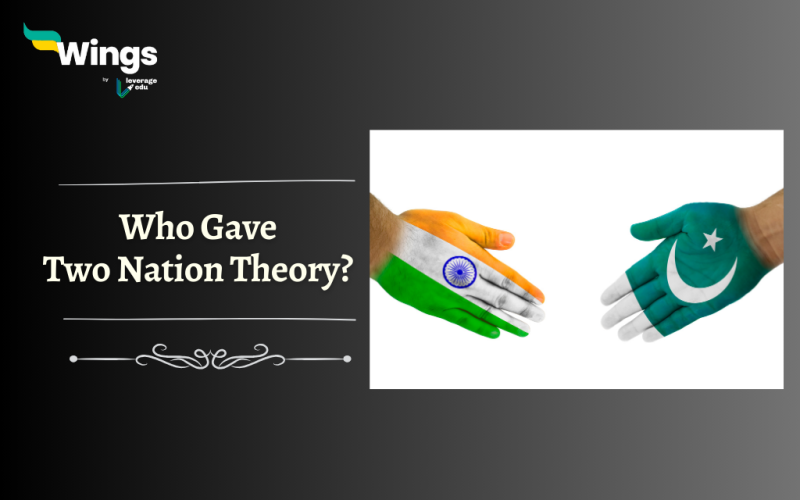The Two Nation Theory emerged against the backdrop of growing communal tensions between Hindus and Muslims in colonial India. The theory sought to address the concerns of the Muslim minority in a predominantly Hindu-majority country and advocated for the creation of a separate state where Muslims could practice their religion freely. But have you ever wondered who gave the two-nation theory? Let’s together read this blog to get the answer to this question.
Table of Contents [show]

Origins of the Two-Nation Theory
The lead figures involved in propagating the theory are –
- Sir Syed Ahmed Khan: Sir Syed Ahmed Khan is often regarded as the pioneer and principal architect of the Two Nation theory. He was a prominent Muslim thinker, founder of AMU and reformer in British India. His advocacy for the separate identity and political representation of Muslims in India led to the creation of the theory.
- Allama Iqbal: The renowned poet and philosopher, Allama Iqbal, also contributed to the development of the Two Nation theory. In his presidential address at the All India Muslim League session on 29th December 1930, he proposed the idea of a separate Muslim state in the northwest regions of India. He did it even when others did not had the courage to publicly talk about separation.
- Muhammad Ali Jinnah: Muhammad Ali Jinnah, the founding father of Pakistan and the leader of the All-India Muslim League, was a staunch advocate of the Two Nation theory. He believed that Hindus and Muslims were distinct nations with irreconcilable differences, necessitating a separate homeland for Muslims.
Also Read – What was the Mountbatten Plan?
Key Features of the Two-Nation Theory
- Religious Differences: The Two Nation theory emphasized the religious divide between Hindus and Muslims, highlighting their distinct cultural, social and political identities.
- Cultural Heritage: Proponents of the theory argued that Muslims in India had a unique cultural heritage and history that distinguished them from the Hindu majority.
- Political Representation: The Two Nation theory called for separate political representation for Muslims to safeguard their interests and ensure their rights in a predominantly Hindu-majority India.
The Two Nation theory ultimately led to the partition of India in 1947, resulting in the creation of Pakistan as a separate Muslim-majority nation.
That’s all about who gave the two-nation theory. If you want to read more articles like this, you can get Study notes on the Modern History of India here. Also, you can visit our general knowledge page on Indian History!
 One app for all your study abroad needs
One app for all your study abroad needs















 45,000+ students trusted us with their dreams. Take the first step today!
45,000+ students trusted us with their dreams. Take the first step today!
